
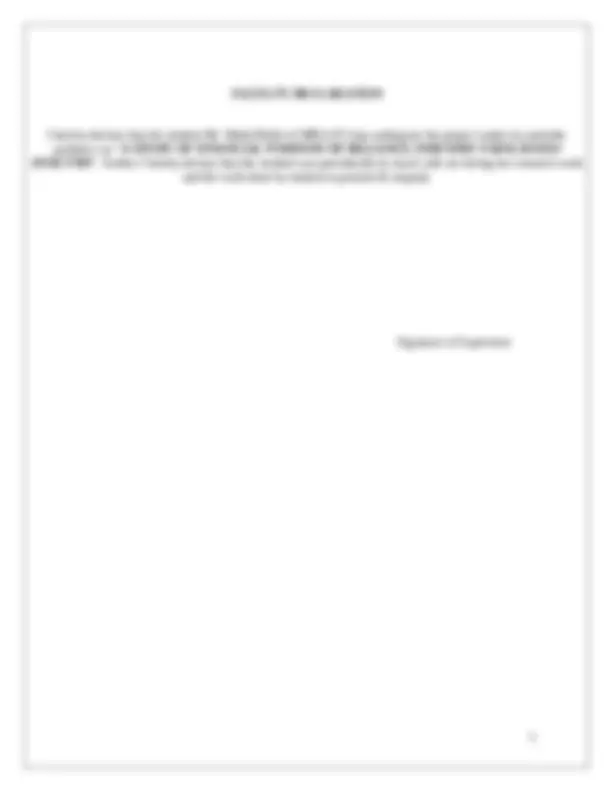
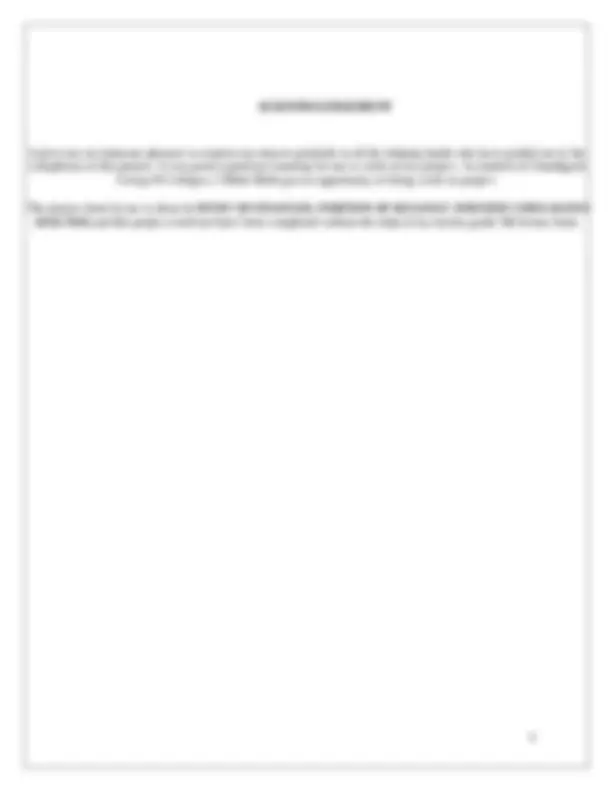
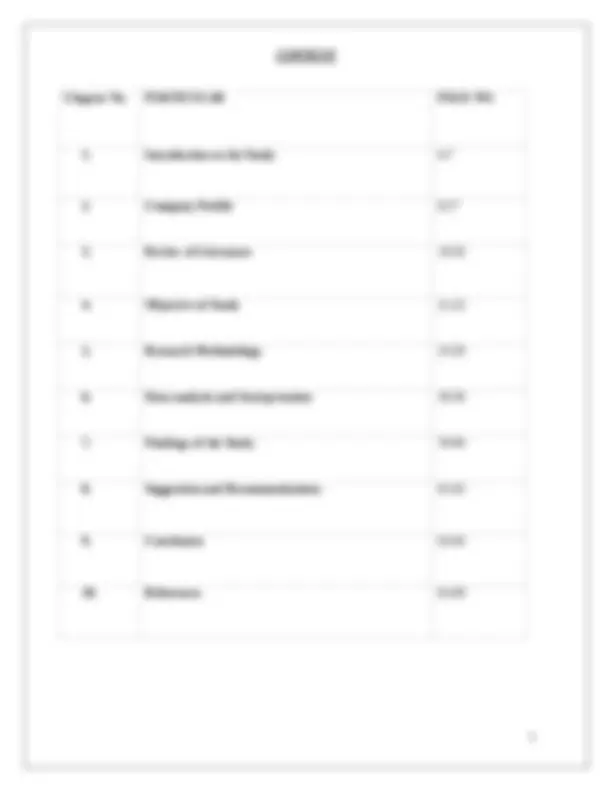

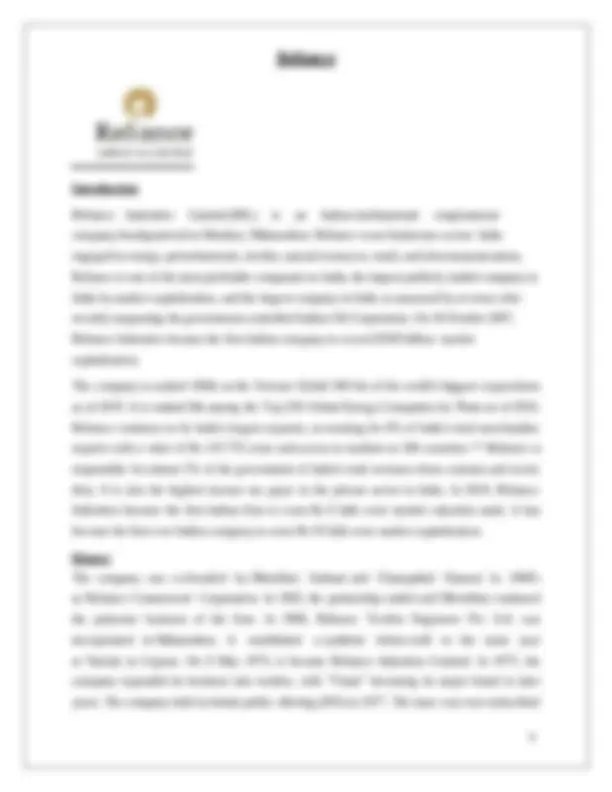
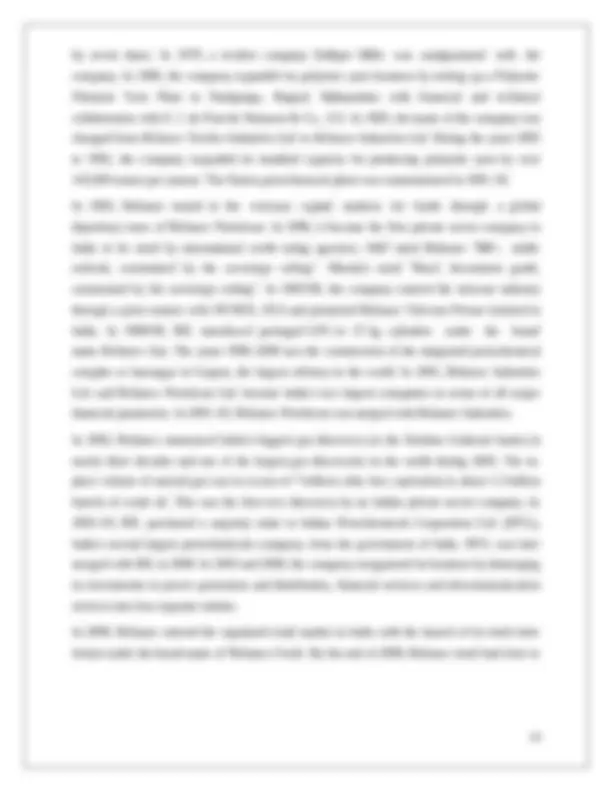
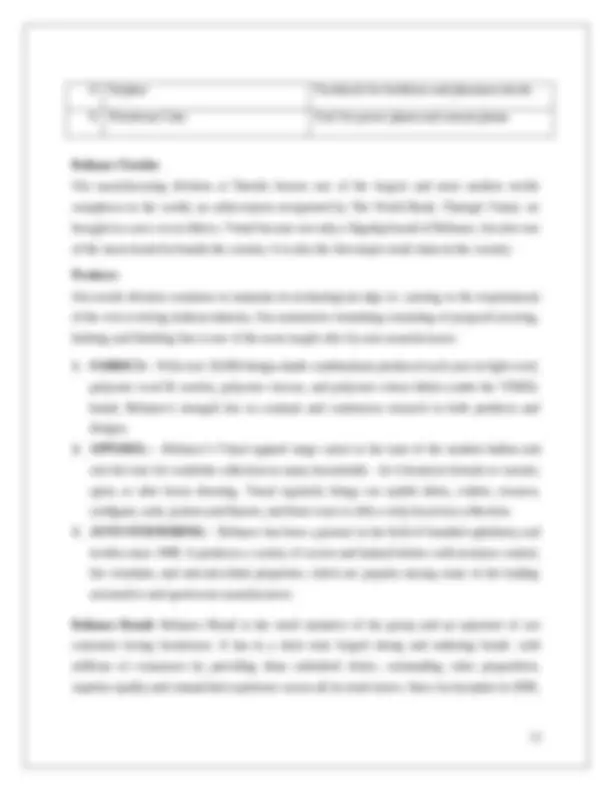
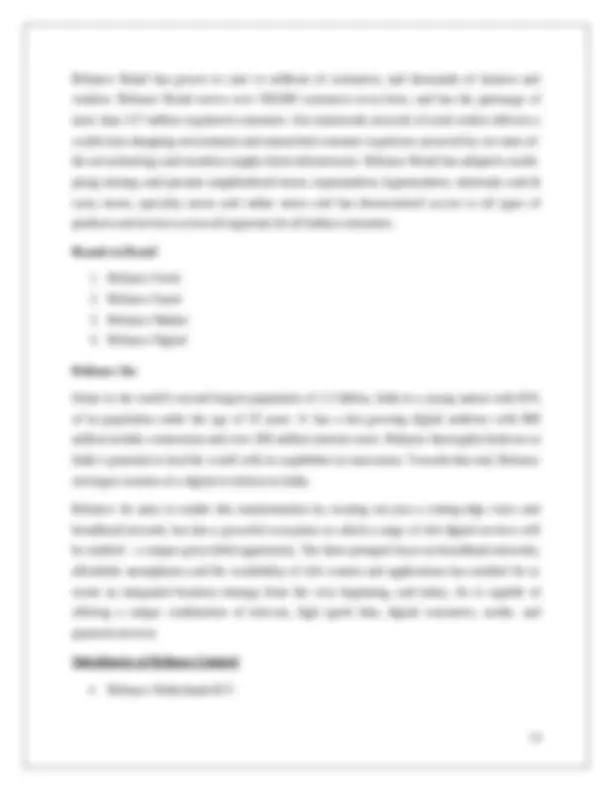
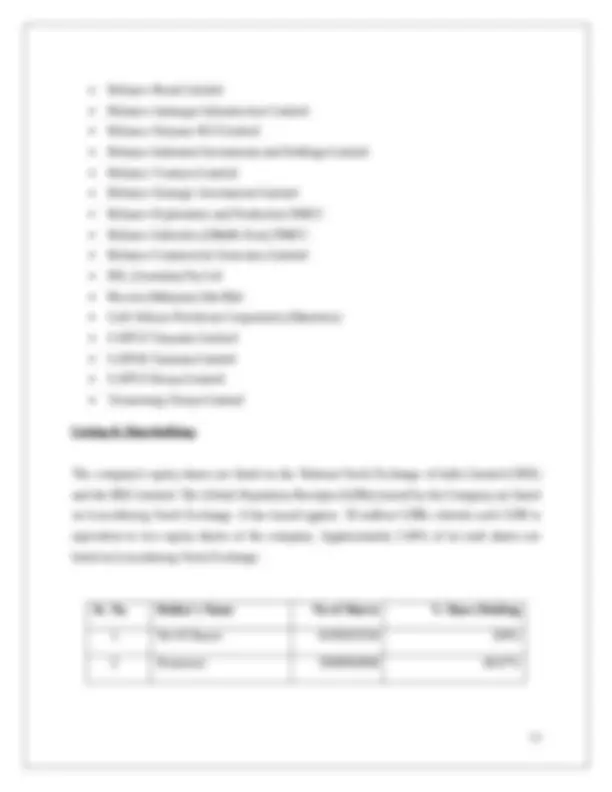

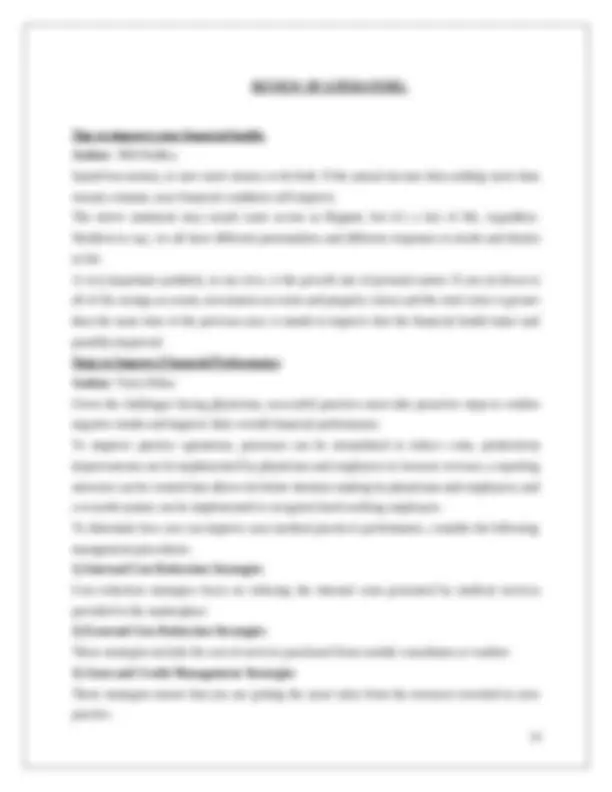
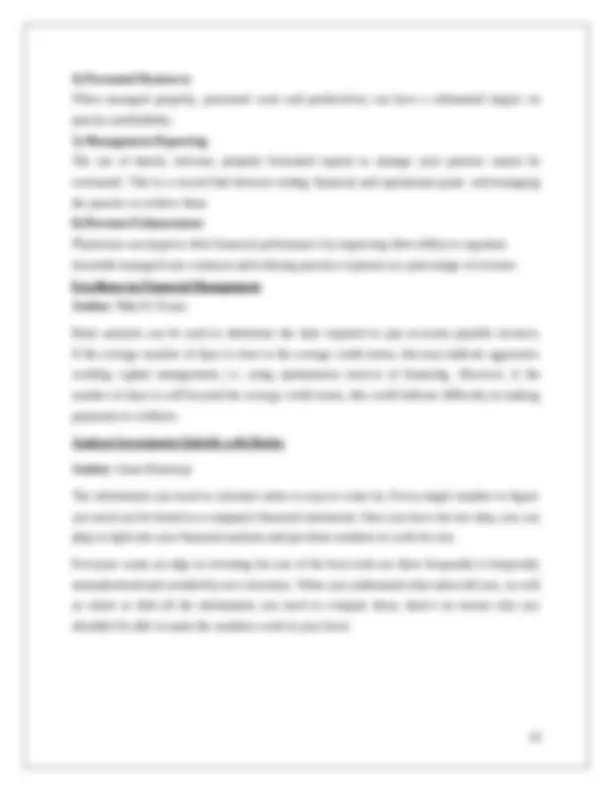

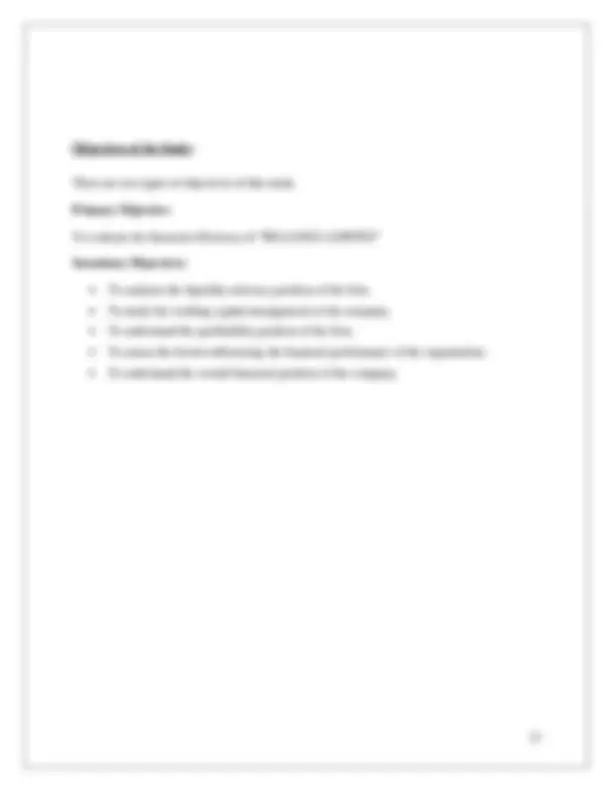
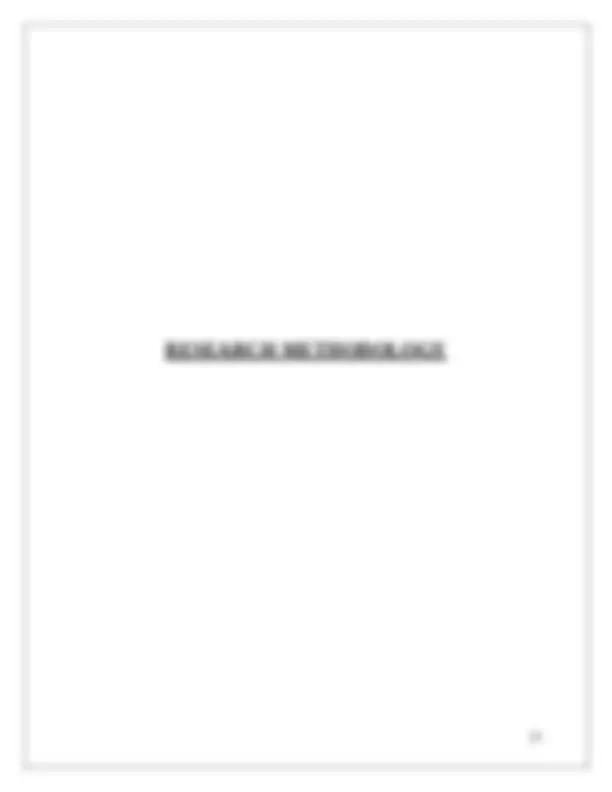
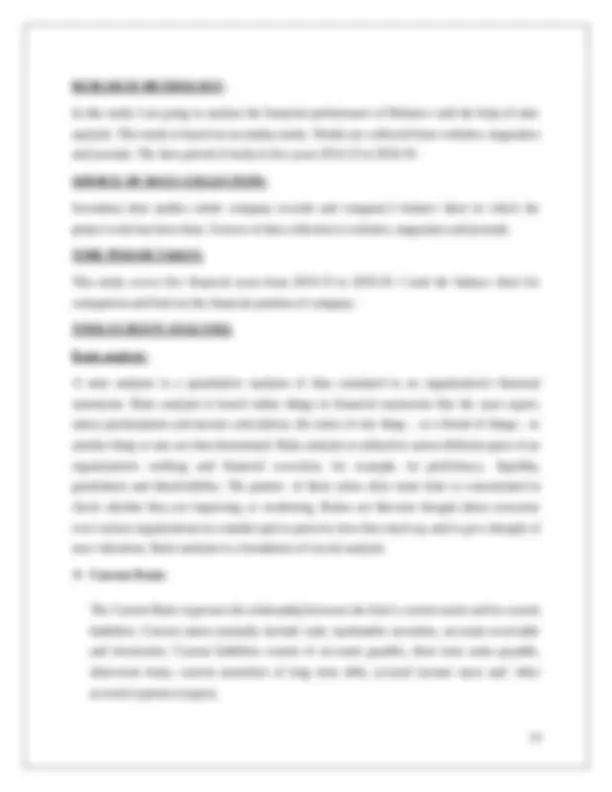
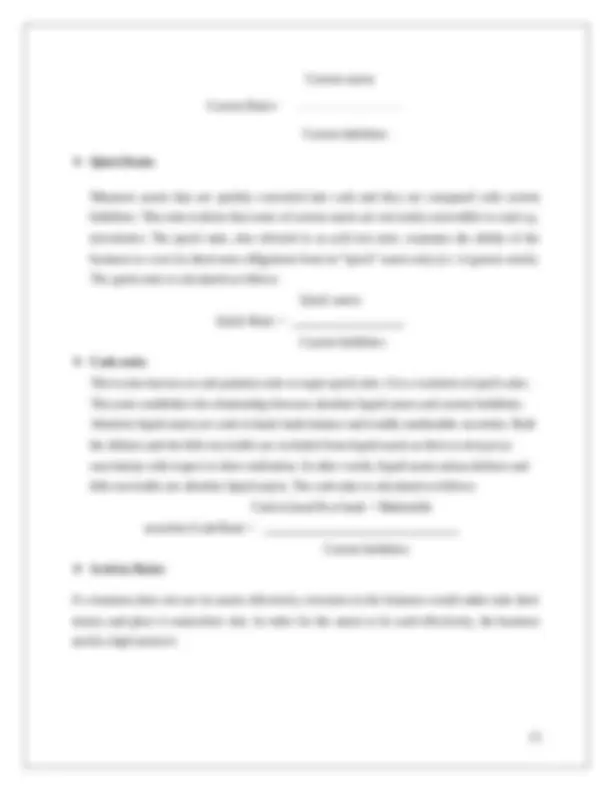
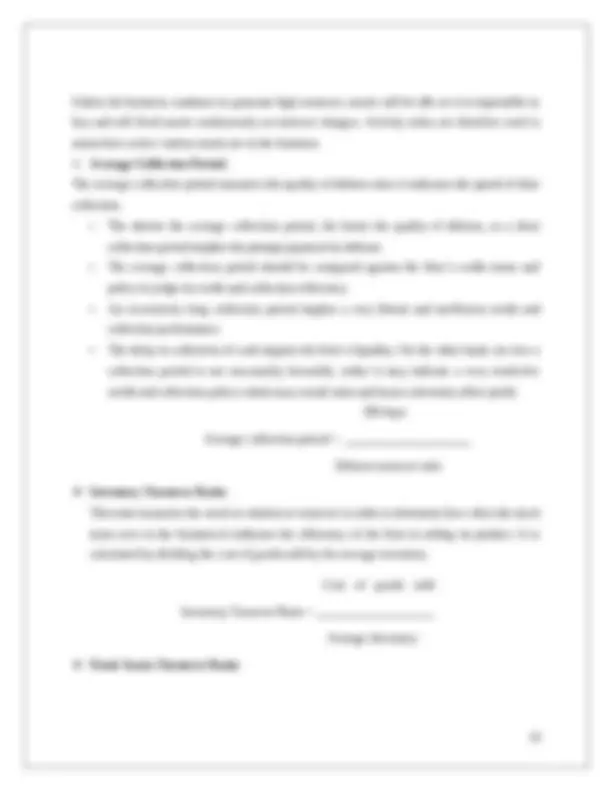
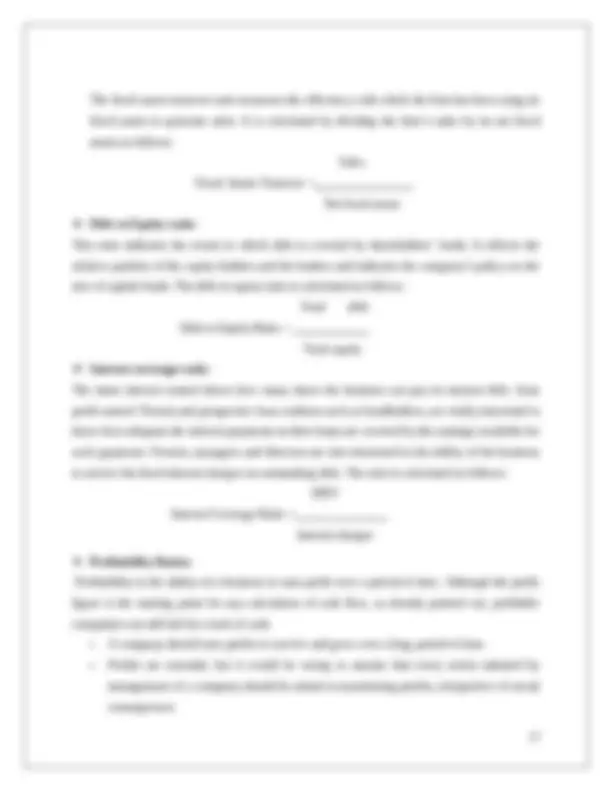
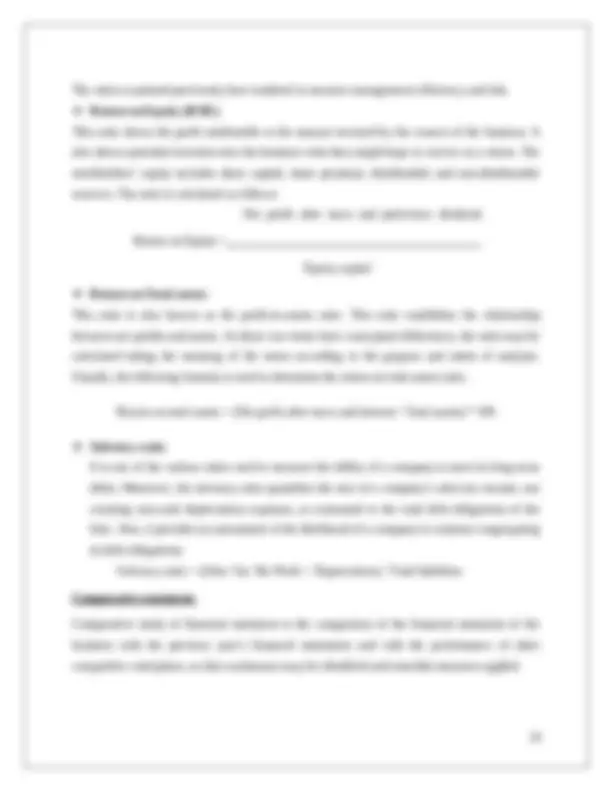
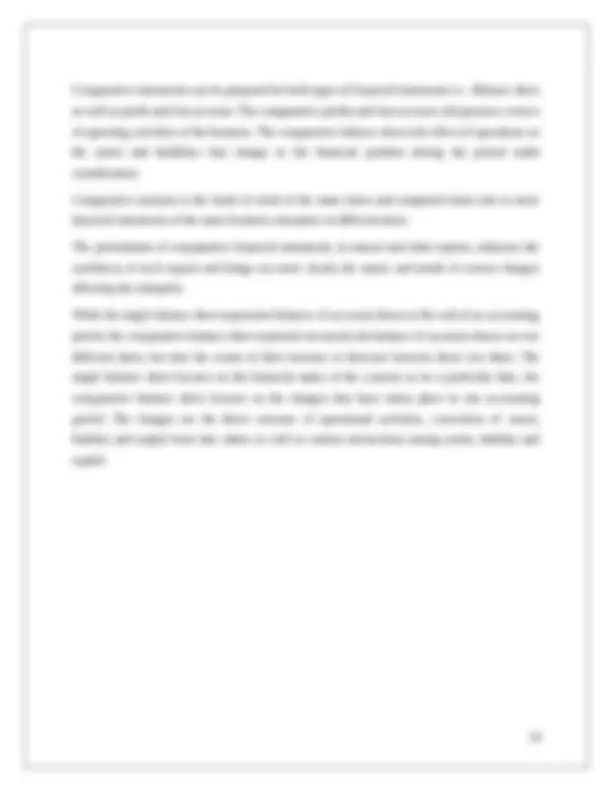
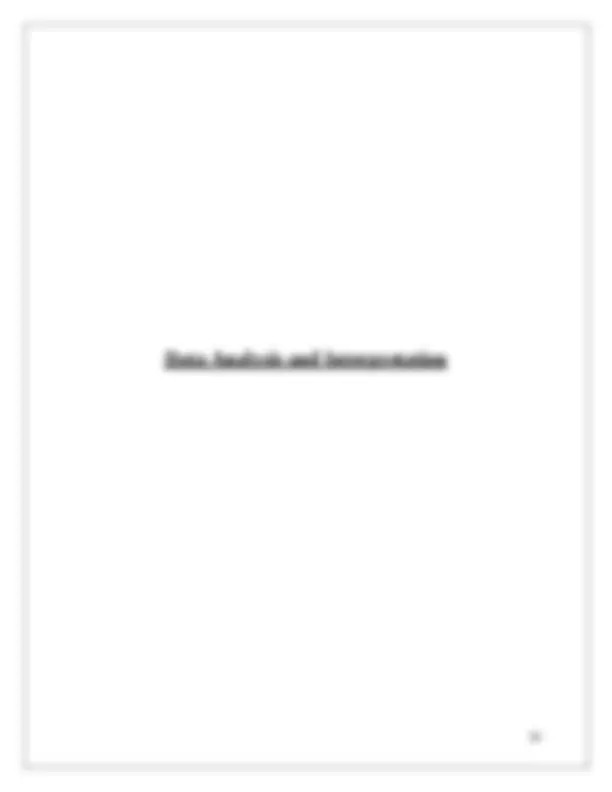
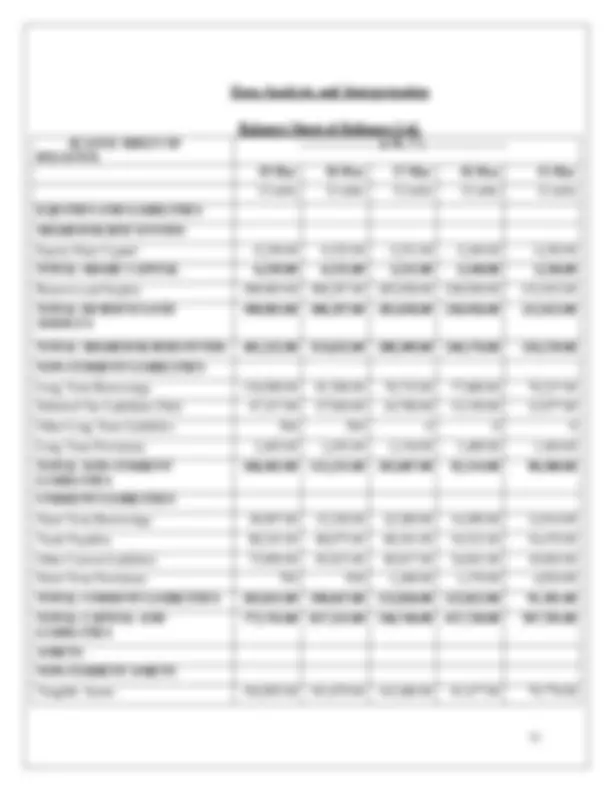
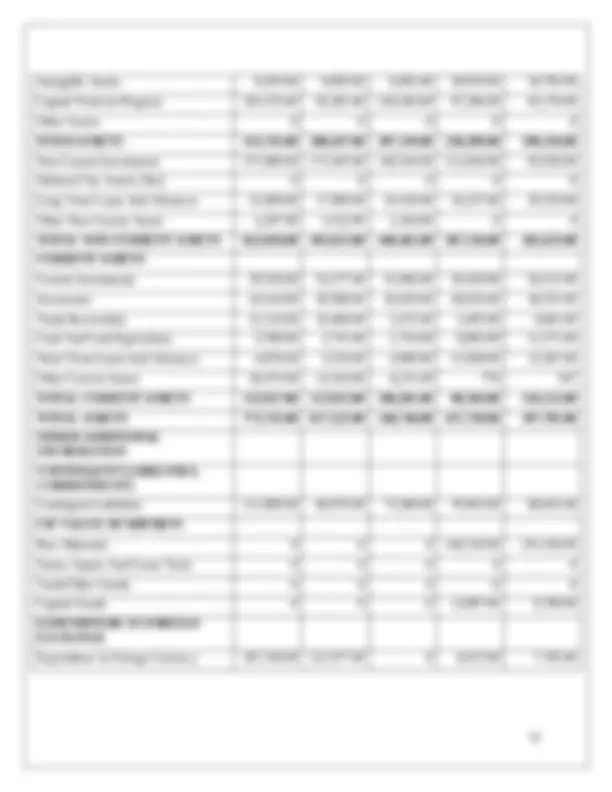
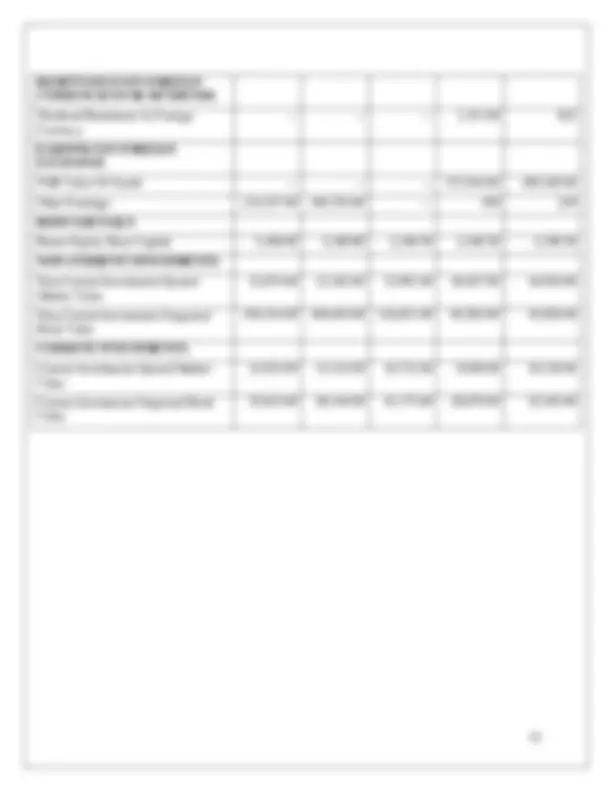
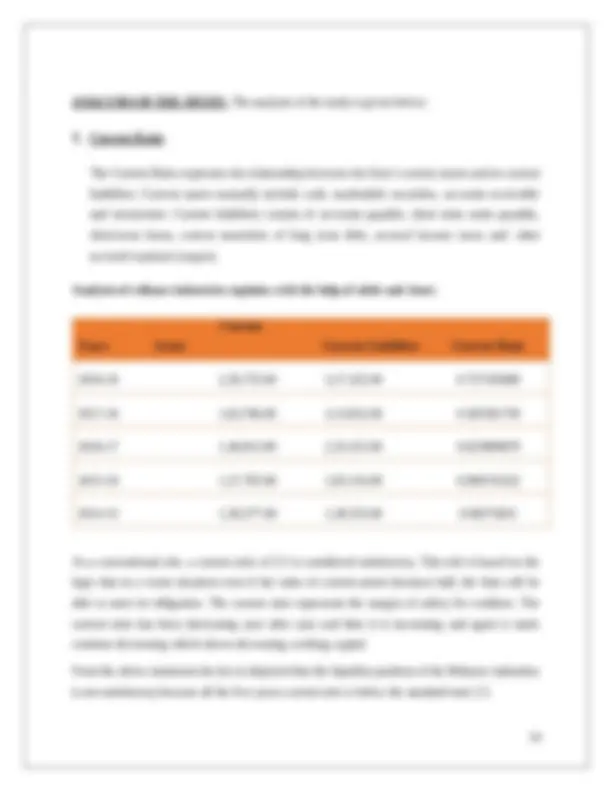
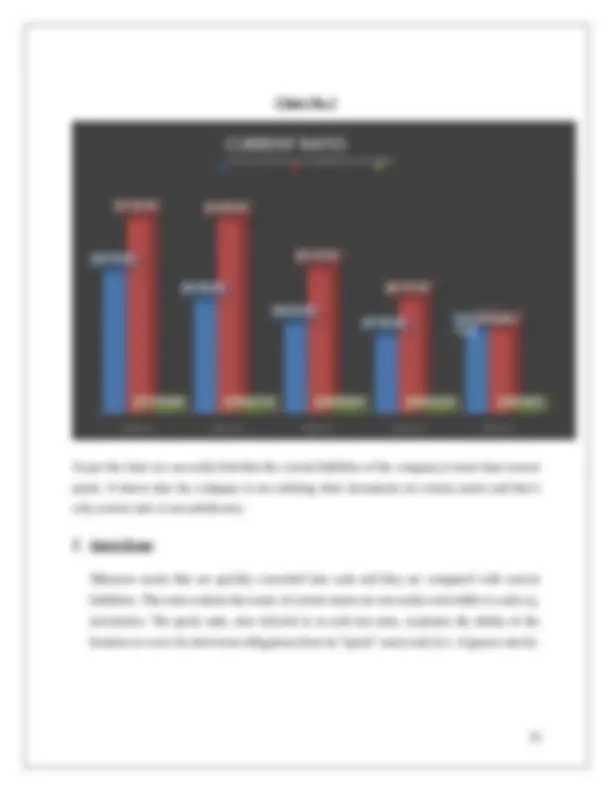
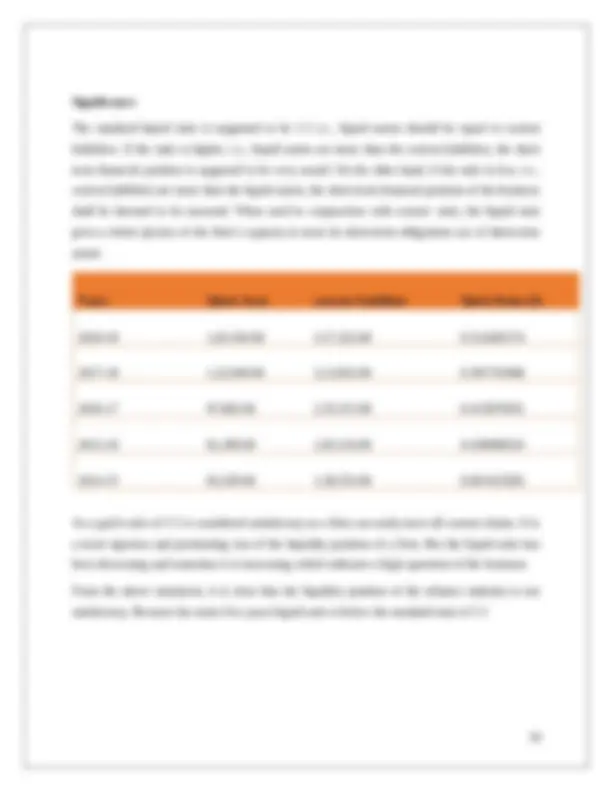
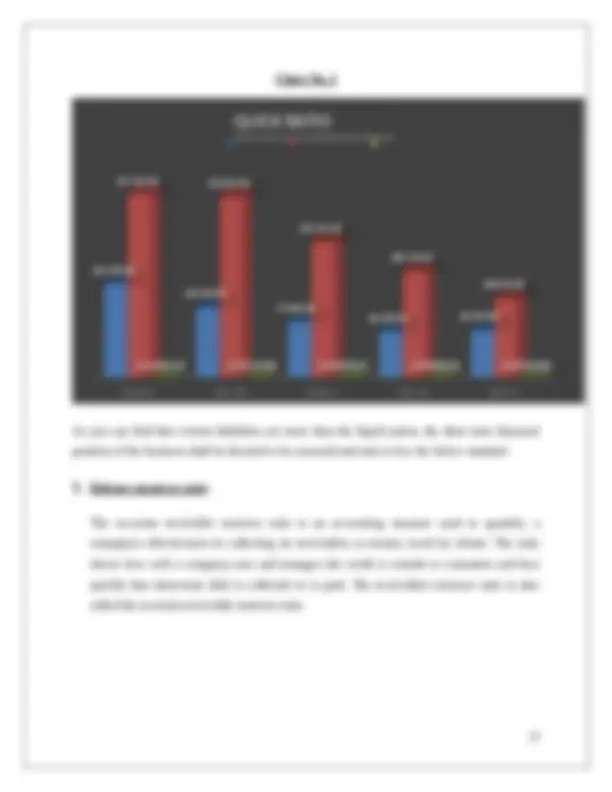
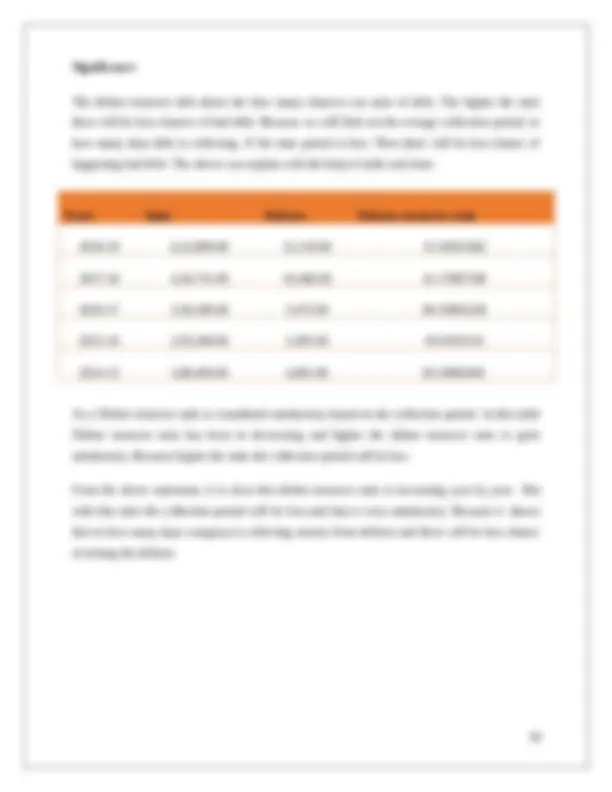
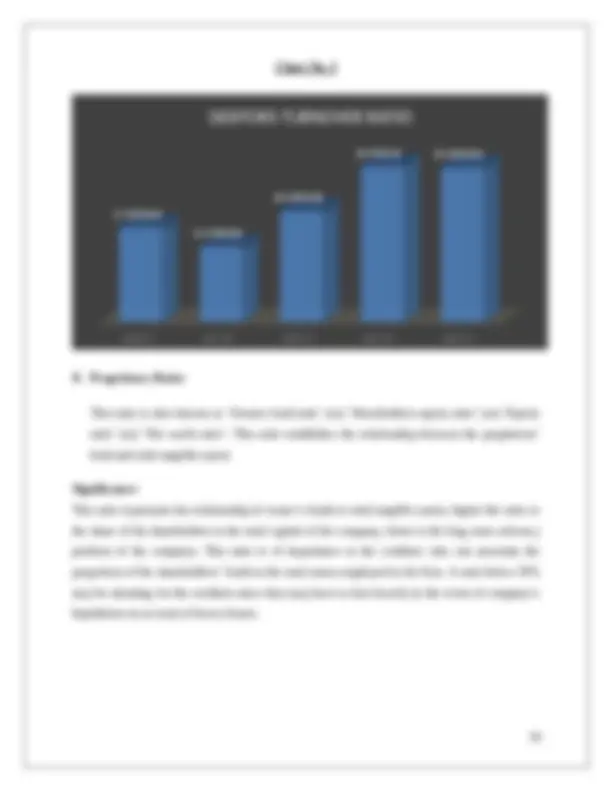
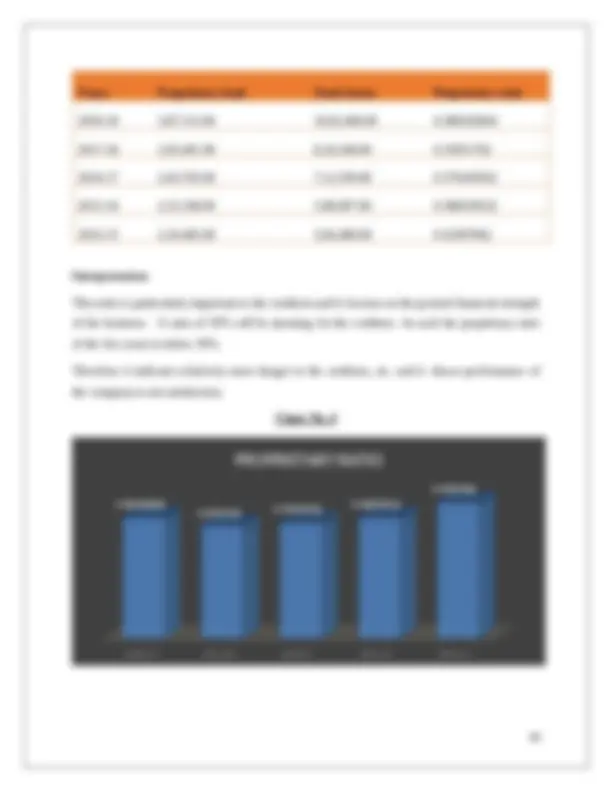
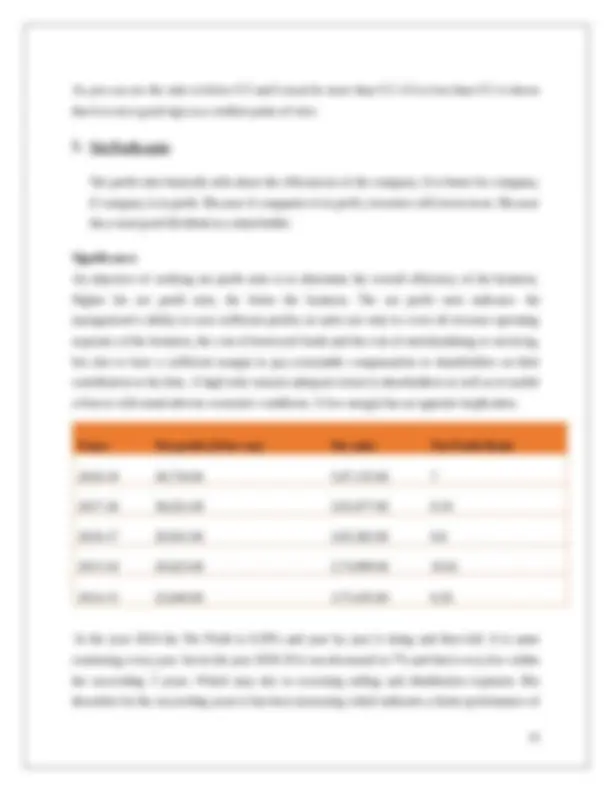
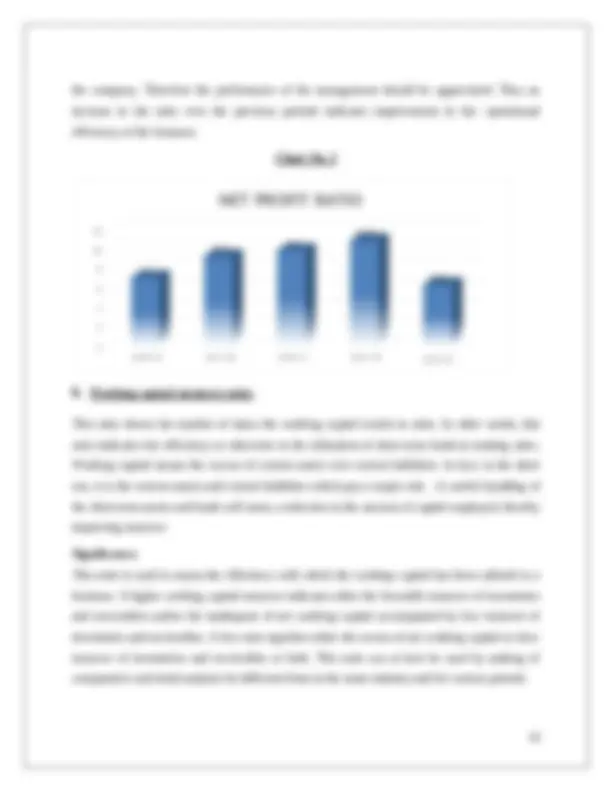
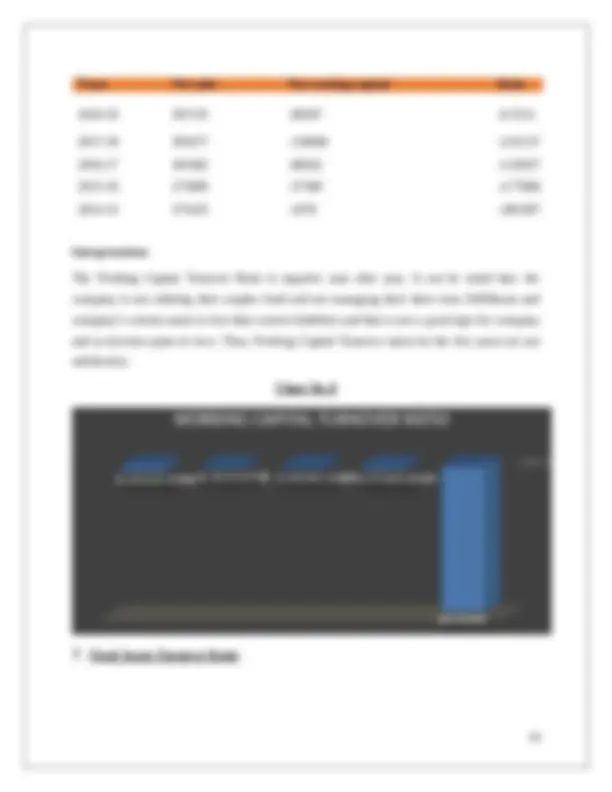
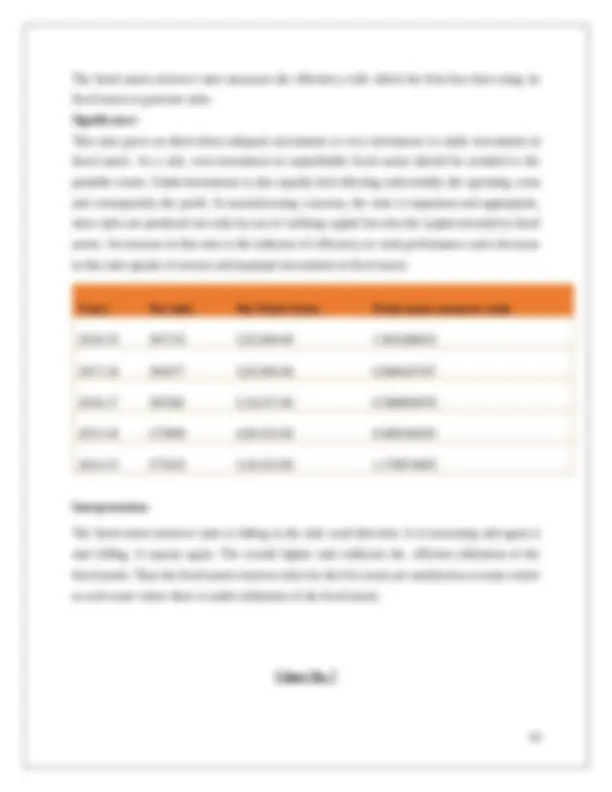
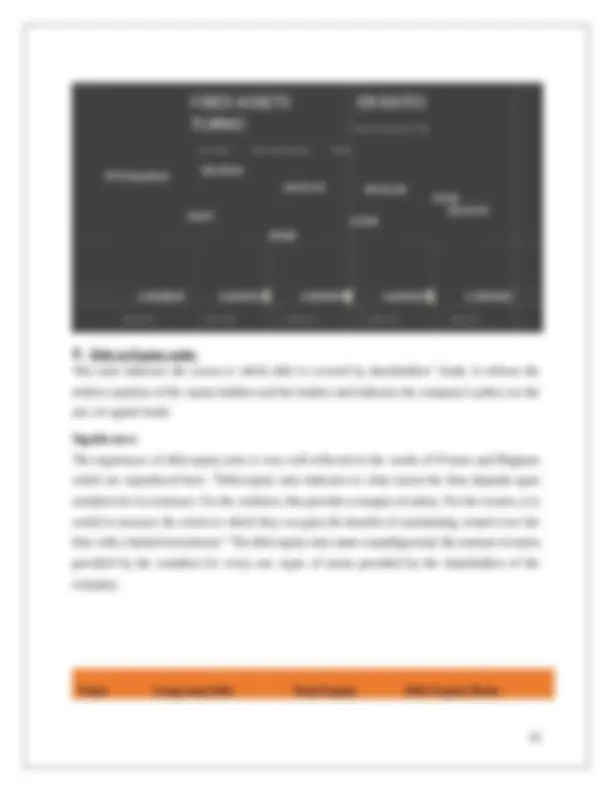
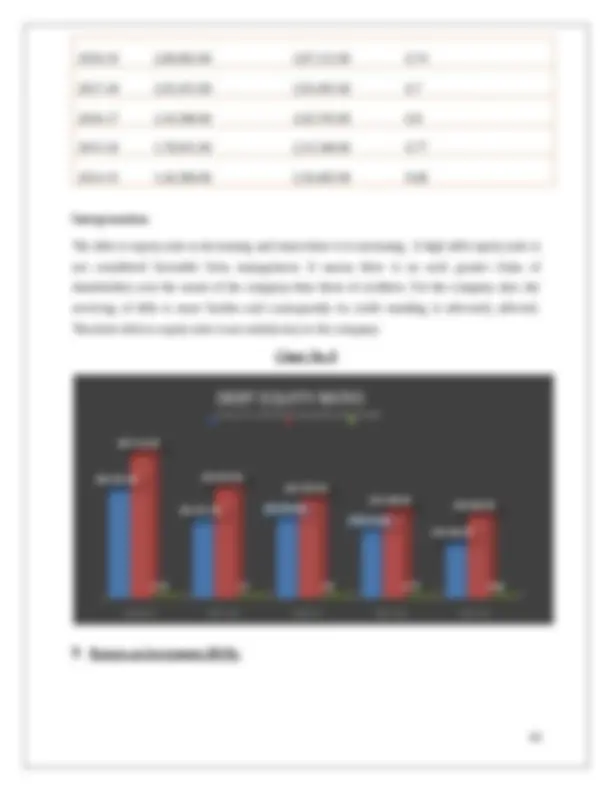
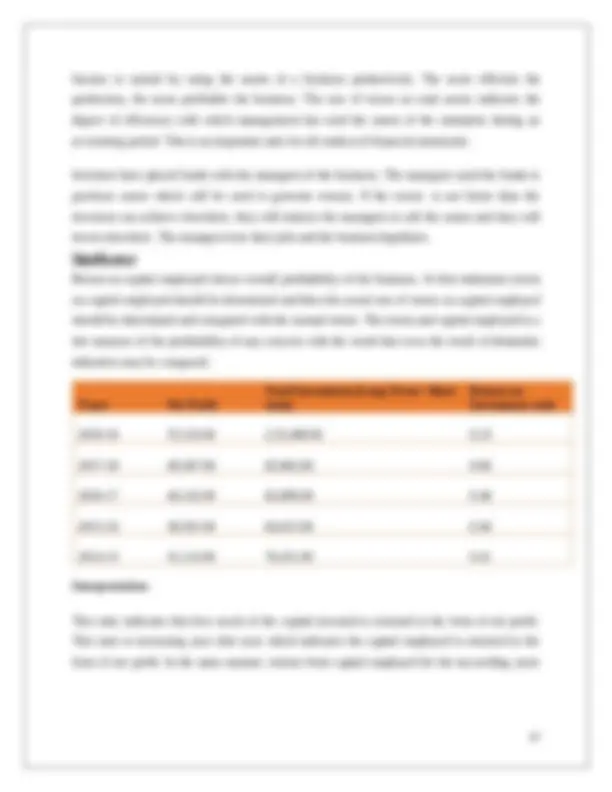
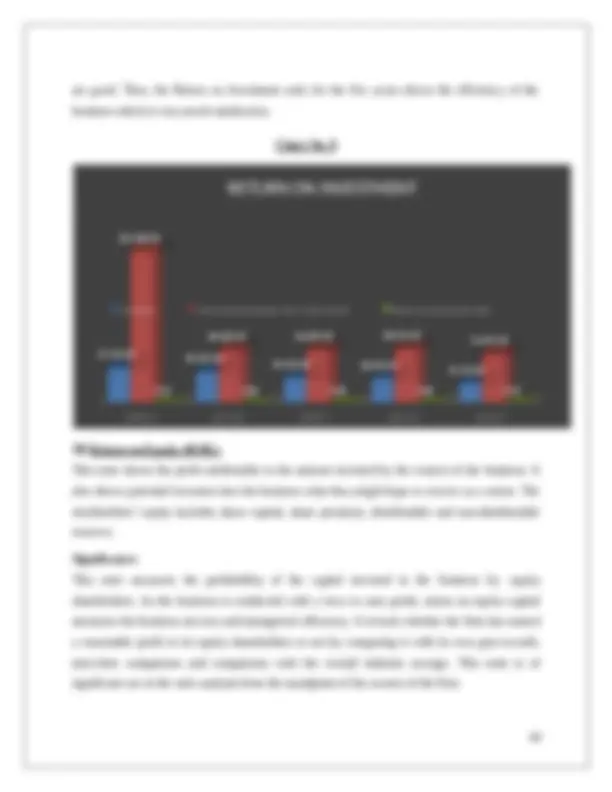
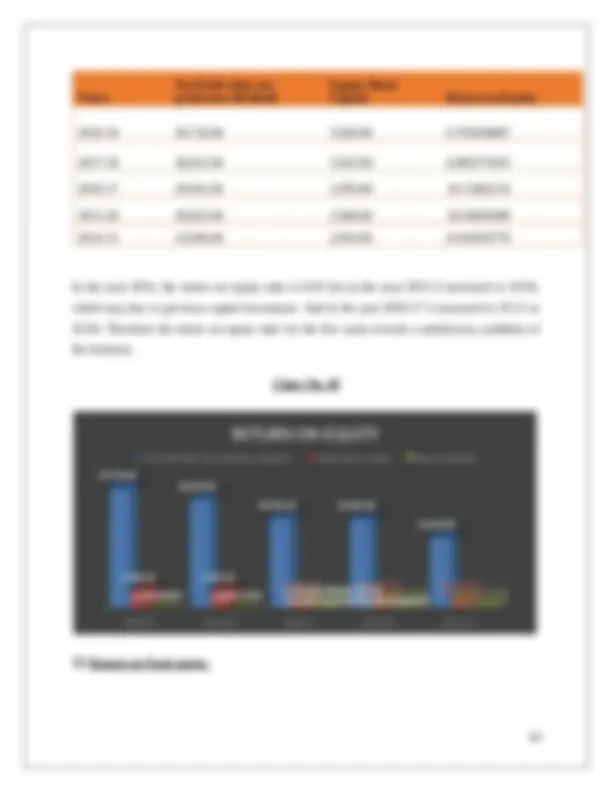
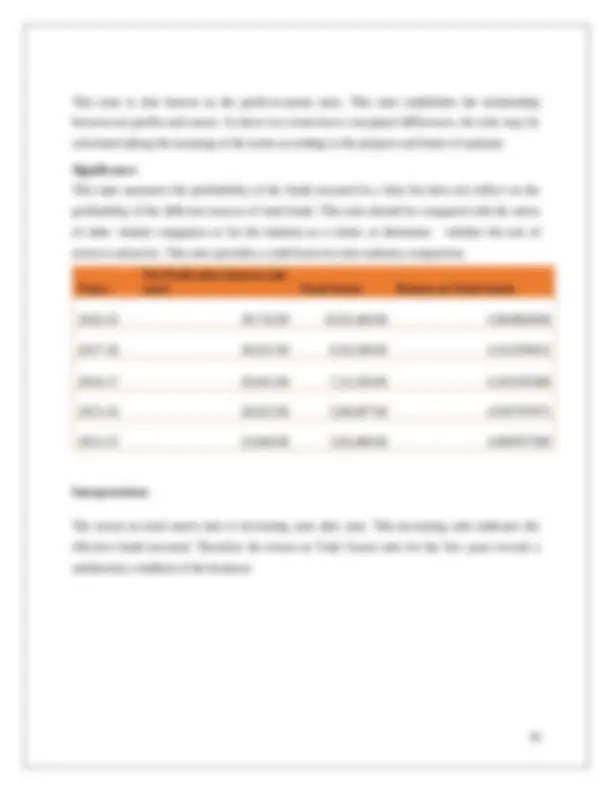
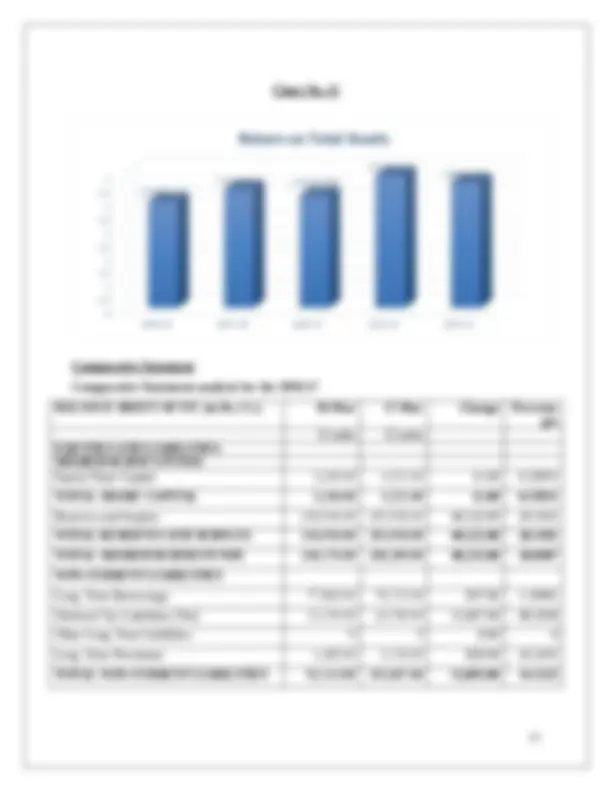
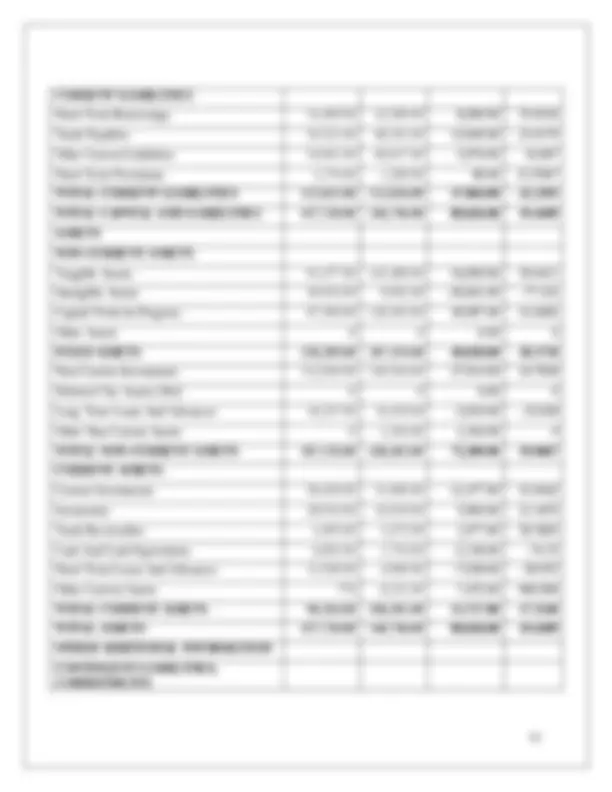
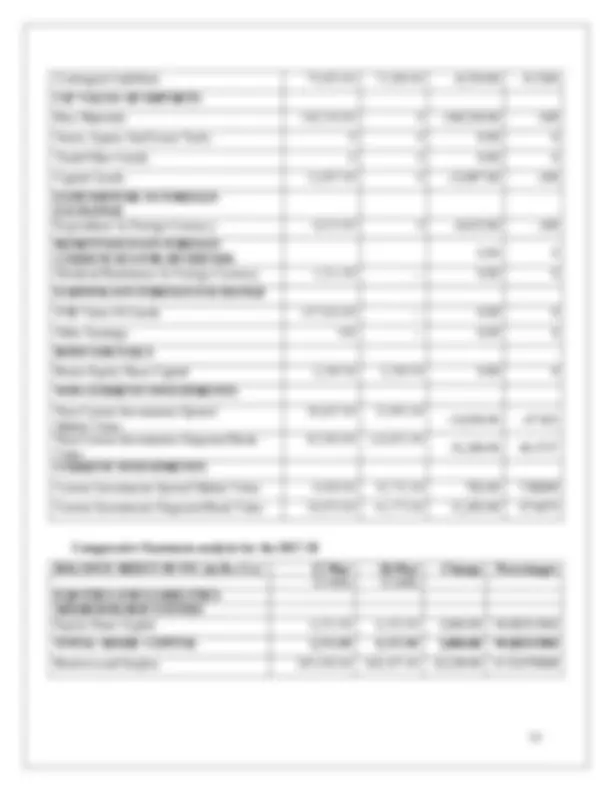
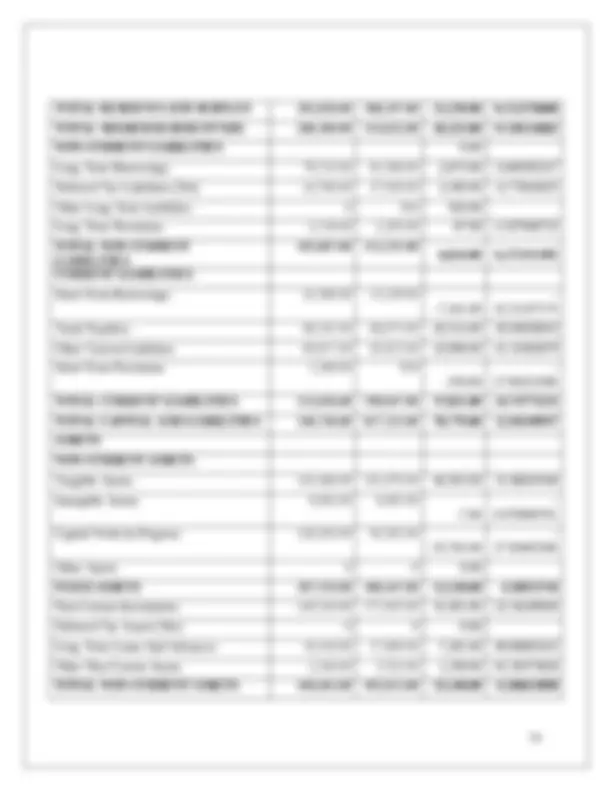
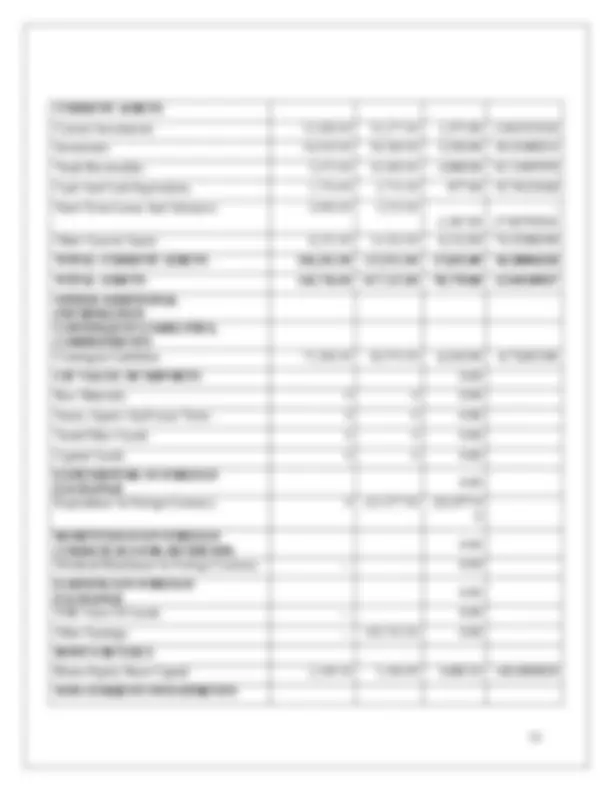
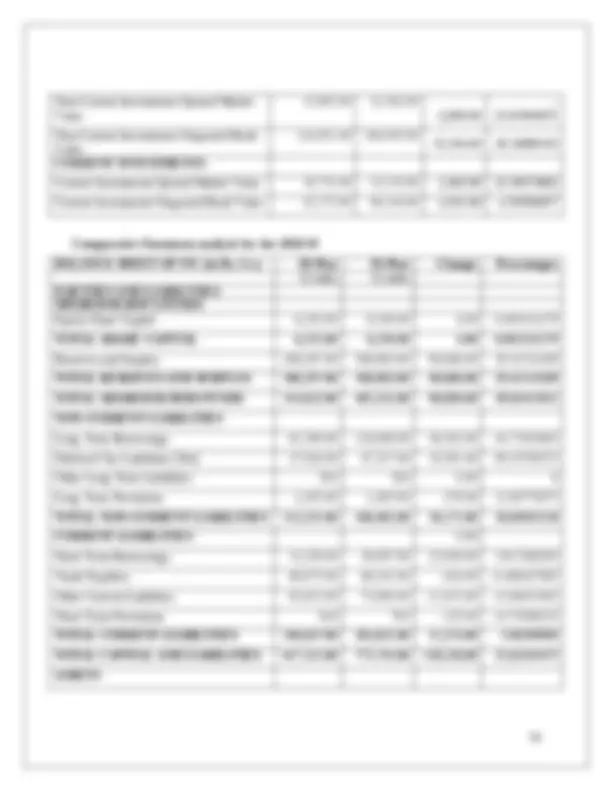
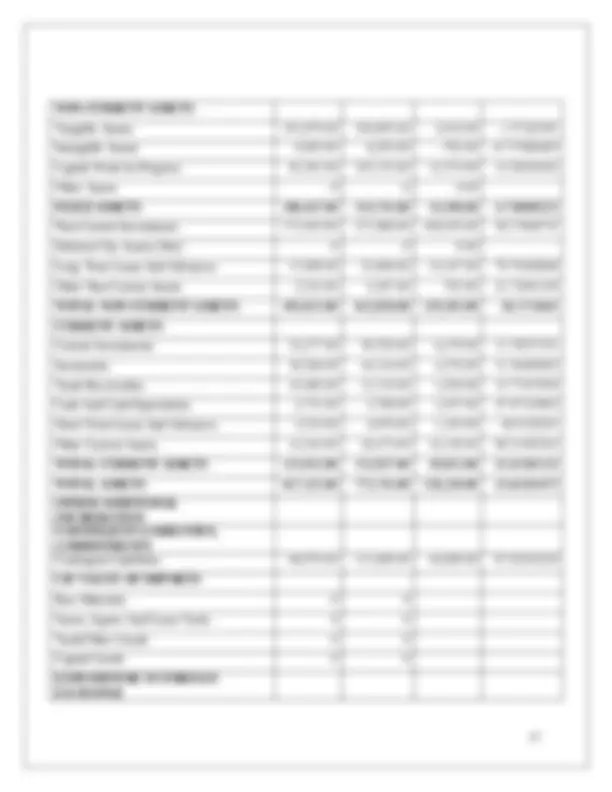
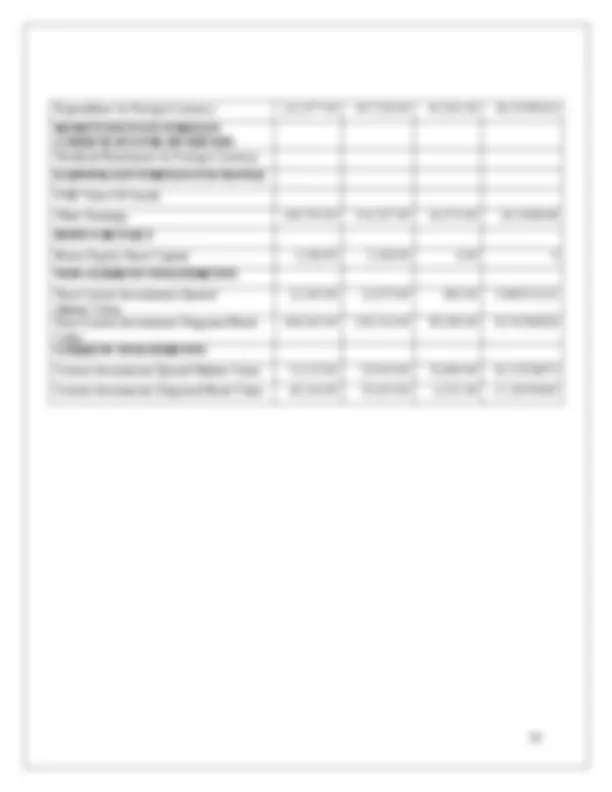

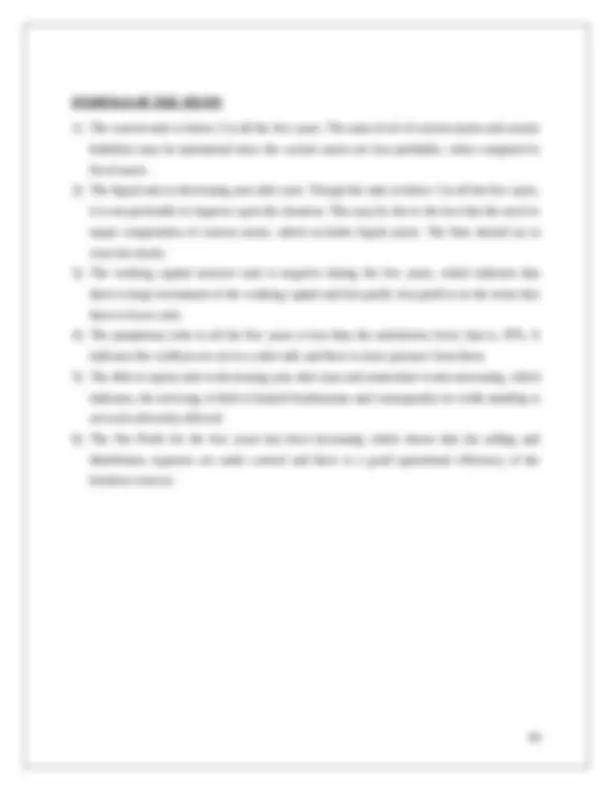
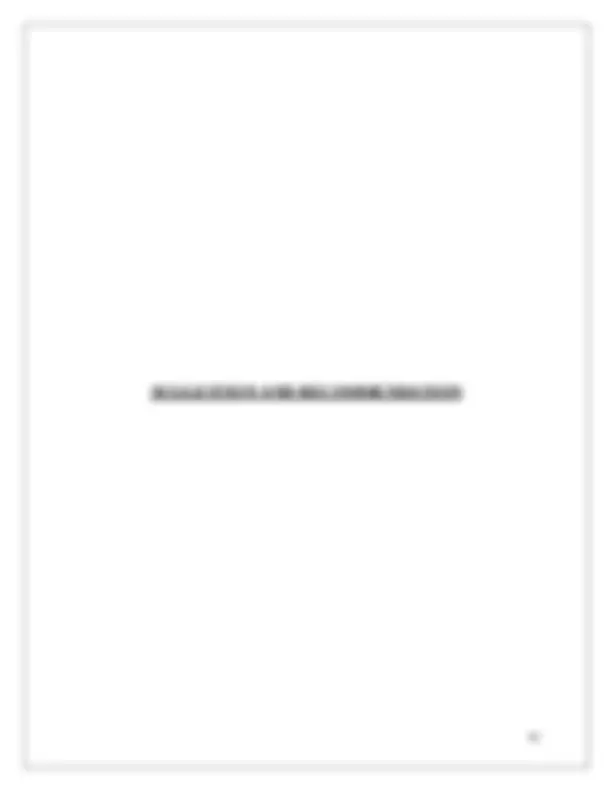
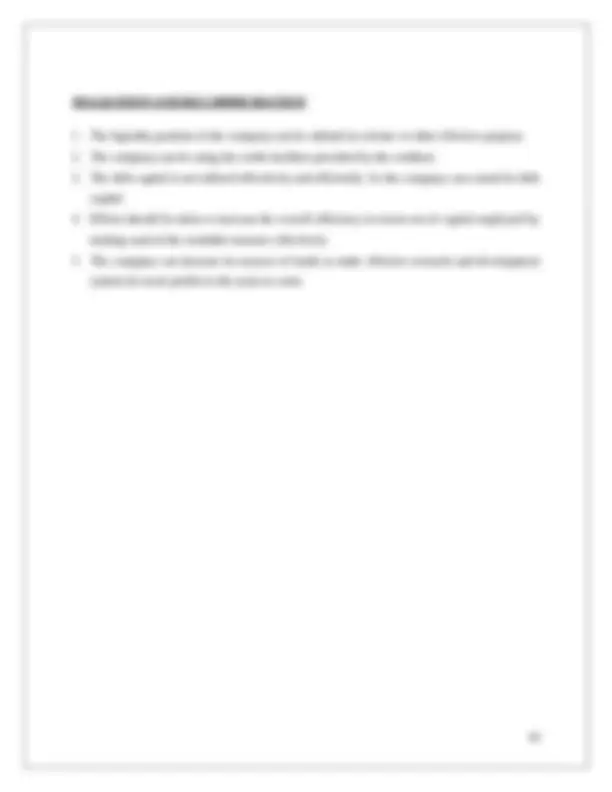

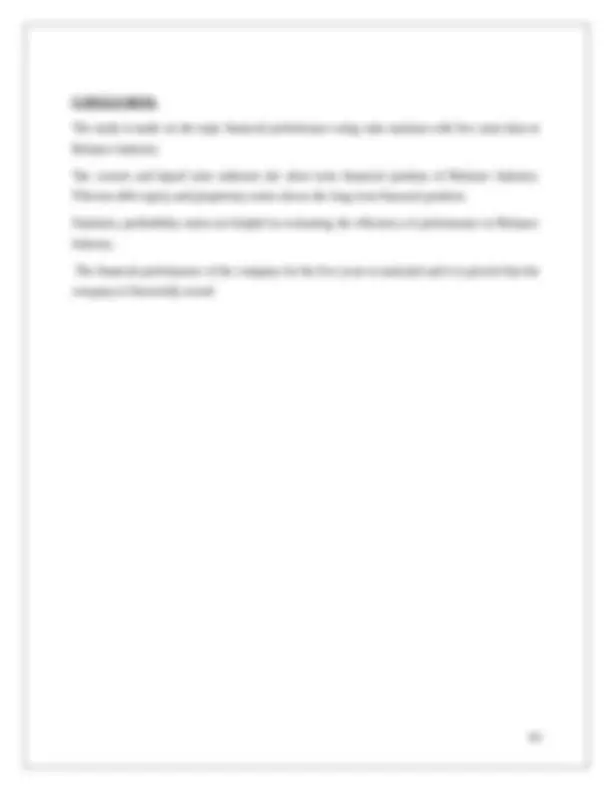

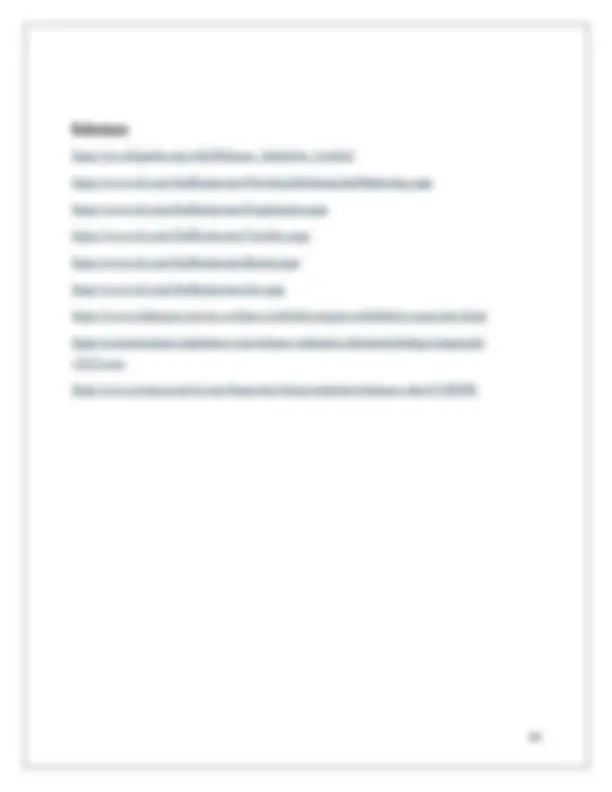


Study with the several resources on Docsity

Earn points by helping other students or get them with a premium plan


Prepare for your exams
Study with the several resources on Docsity

Earn points to download
Earn points by helping other students or get them with a premium plan
Community
Ask the community for help and clear up your study doubts
Discover the best universities in your country according to Docsity users
Free resources
Download our free guides on studying techniques, anxiety management strategies, and thesis advice from Docsity tutors
The study is made on the topic financial performance using ratio analysis with five years data in Reliance Industry. The current and liquid ratio indicates the short term financial position of Reliance Industry. Whereas debt equity and proprietary ratios shows the long term financial position. Similarly, profitability ratios are helpful in evaluating the efficiency of performance in Reliance Industry. The financial performance of the company for the five years is analyzed and it is proved that t
Typology: Study Guides, Projects, Research
1 / 66

This page cannot be seen from the preview
Don't miss anything!



























































Submitted by: Supervisor: Mohit Rikhi Seema Saini 2017426 Professor Department of Management
I, Mohit Rikhi hereby declare that I have completed a research project titled “ A STUDY OF FINANCIAL POSITION OF RELIANCE INDUSTRY USING RATIO ANALYSIS ” under the guidance of “Ms. Seema Saini”. Further I hereby confirm that the work presented herein is genuine and original and has not been published elsewhere. Signature: Mohit Rikhi 2017426
It gives me an immense pleasure to express my sincere gratitude to all the helping hands who have guided me in the completion of this project. It was great experience learning for me to work on my project. As student of Chandigarh Group Of Colleges, I Mohit Rikhi got an opportunity of doing work on project. The project done by me is about A STUDY OF FINANCIAL POSITION OF RELIANCE INDUSTRY USING RATIO ANALYSIS and this project could not have been completed without the help of my faculty guide Ms Seema Saini.
Financial Management is that managerial activity which is concerned with the planning and controlling of the firm’s financial resources. Though it was a branch of economics till 1890 as a separate or discipline it is of recent origin. Financial Management is concerned with the duties of the finance manager in a business firm. He performs such varied tasks as budgeting, financial forecasting, cash management, credit administration, investment analysis and funds procurement. The recent trend towards globalization of business activity has created new demands and opportunities in managerial finance. Financial statements are prepared and presented for the external users of accounting information. As these statements are used by investors and financial analysts to examine the firm’s performance in order to make investment decisions, they should be prepared very carefully and contain as much investment decisions, they should be prepared very carefully and contain as much information as possible. Preparation of the financial statement is the responsibility of top management. The financial statements are generally prepared from the accounting records maintained by the firm. Financial performance is an important aspect which influences the long-term stability, profitability and liquidity of an organization. Usually, financial ratios are said to be the parameters of the financial performance. The Evaluation of financial performance had been taken up for the study. Analysis of Financial performances are of greater assistance in locating the weak spots of Reliance industry and even though the overall performance may be satisfactory. This further helps in Financial forecasting and planning. Communicate the strength and financial standing of Reliance limited. For effective control of business.
by seven times. In 1979, a textiles company Sidhpur Mills was amalgamated with the company. In 1980, the company expanded its polyester yarn business by setting up a Polyester Filament Yarn Plant in Patalganga, Raigad, Maharashtra with financial and technical collaboration with E. I. du Pont de Nemours & Co., U.S. In 1985, the name of the company was changed from Reliance Textiles Industries Ltd. to Reliance Industries Ltd. During the years 1985 to 1992, the company expanded its installed capacity for producing polyester yarn by over 145,000 tonnes per annum. The Hazira petrochemical plant was commissioned in 1991–92. In 1993, Reliance turned to the overseas capital markets for funds through a global depositary issue of Reliance Petroleum. In 1996, it became the first private sector company in India to be rated by international credit rating agencies. S&P rated Reliance "BB+, stable outlook, constrained by the sovereign ceiling". Moody's rated "Baa3, Investment grade, constrained by the sovereign ceiling". In 1995/96, the company entered the telecom industry through a joint venture with NYNEX, USA and promoted Reliance Telecom Private Limited in India. In 1998/99, RIL introduced packaged LPG in 15 kg cylinders under the brand name Reliance Gas. The years 1998–2000 saw the construction of the integrated petrochemical complex at Jamnagar in Gujarat, the largest refinery in the world. In 2001, Reliance Industries Ltd. and Reliance Petroleum Ltd. became India's two largest companies in terms of all major financial parameters. In 2001–02, Reliance Petroleum was merged with Reliance Industries. In 2002, Reliance announced India's biggest gas discovery (at the Krishna Godavari basin) in nearly three decades and one of the largest gas discoveries in the world during 2002. The in- place volume of natural gas was in excess of 7 trillion cubic feet, equivalent to about 1.2 billion barrels of crude oil. This was the first ever discovery by an Indian private sector company. In 2002–03, RIL purchased a majority stake in Indian Petrochemicals Corporation Ltd. (IPCL), India's second largest petrochemicals company, from the government of India. IPCL was later merged with RIL in 2008. In 2005 and 2006, the company reorganized its business by demerging its investments in power generation and distribution, financial services and telecommunication services into four separate entities. In 2006, Reliance entered the organised retail market in India with the launch of its retail store format under the brand name of 'Reliance Fresh'. By the end of 2008, Reliance retail had close to
600 stores across 57 cities in India. In November 2009, Reliance Industries issued 1:1 bonus shares to its shareholders. In 2010, Reliance entered the broadband services market with acquisition of Infotel Broadband Services Limited, which was the only successful bidder for pan- India fourth-generation (4G) spectrum auction held by the government of India. In the same year, Reliance and BP announced a partnership in the oil and gas business. BP took a 30 per cent stake in 23 oil and gas production sharing contracts that Reliance operates in India, including the KG- D6 block for $7.2 billion. Reliance also formed a 50:50 joint venture with BP for sourcing and marketing of gas in India. In 2017, RIL set up a joint venture with Russian Company Sibur for setting up a Butyl rubber plant in Jamnagar, Gujarat, to be operational by 2018. Business Diversification of ITC Reliance in Exploration & Production Reliance entered the Exploration and Production (E&P) business by becoming a 30% partner in an unincorporated joint venture with Shell (erstwhile BG) and ONGC in the Panna Mukta and Mid and South Tapti blocks. As of Jan 1st, 2020, our domestic portfolio comprises of conventional oil and gas blocks in Krishna Godavari and Mahanadi basins and two Coal Bed Methane (CBM) blocks, Sohagpur (East) and Sohagpur (West) in Madhya Pradesh. Oil and gas is currently being produced from our CBM blocks in India and Shale JVs in the US. Partnering for Growth Partnerships represent an important dimension of the E&P business. Reliance and BP entered into transformational partnership with focus on delivering growth and adding value to India’s energy sector. The partnership is a perfect blend of BP’s deepwater and development expertise with Reliance’s project management skills. We have also forged strategic partnerships with Chevron and Ensign Natural Resources for development of shale gas resources in US. RIL and its partners in domestic and Shale Business work closely together and channelize expertise to target high quality prospects and optimise existing and future development plans. Reliance Petroleum Refining & Marketing The Jamnagar manufacturing division is the world's largest refining hub. The entire refining complex was built in a record time at globally competitive capital costs – in fact, at costs much lower than comparable refineries around the world. Its scale, design, flexibility, level of
Reliance Retail has grown to cater to millions of customers, and thousands of farmers and vendors. Reliance Retail serves over 100,000 customers every hour, and has the patronage of more than 117 million registered customers. Our nationwide network of retail outlets delivers a world-class shopping environment and unmatched customer experience powered by our state-of- the-art technology and seamless supply-chain infrastructure. Reliance Retail has adopted a multi- prong strategy and operates neighborhood stores, supermarkets, hypermarkets, wholesale cash & carry stores, specialty stores and online stores and has democratized access to all types of products and services across all segments for all Indian consumers. Brands in Retail
International Refiner of the Year in 2013 at the HART Energy's 27th World Refining & Fuel Conference. This is the second time that RIL has received this Award for its Jamnagar Refinery, the first being in 2005.
According to survey conducted by Brand Finance in 2013, Reliance is the second most valuable brand in India. The Brand Trust Report ranked Reliance Industries as the 7th most trusted brand in India in 2013 and 9th in 2014. RIL was certified as 'Responsible Care Company' by the American Chemistry Council in March, 2012. RIL was ranked at 25th position across the world, on the basis of sales, in the ICIS Top 100 Chemicals Companies list in 2012. RIL was awarded the National Golden Peacock Award 2011 for its contribution in the field of corporate sustainability. In 2009, Boston Consulting Group (BCG) named Reliance Industries as the world's fifth biggest 'sustainable value creator' in a list of 25 top companies globally in terms of investor returns over a decade. The company was selected as one of the world's 100 best managed companies for the year 2000 by Industry Week magazine. From 1994 to 1997, the company won National Energy Conservation Award in the petrochemical sector.
Tips to improve your financial health. Author: Bill Hudley Spend less money, or save more money or do both. If the annual income does nothing more than remain constant, your financial condition will improve. The above statement may sound come across as flippant, but it’s a fact of life, regardless. Needless to say, we all have different personalities and different responses to needs and desires in life. A very important yardstick, in my view, is the growth rate of personal assets. If you sit down to all of the savings accounts, investment accounts and properly values and the total value is greater than the same time of the previous year, it stands to improve that the financial health intact and possibly improved. Steps to Improve Financial Performance Author: Terry Peltes Given the challenges facing physicians, successful practices must take proactive steps to combat negative trends and improve their overall financial performance. To improve practice operations, processes can be streamlined to reduce costs; productivity improvements can be implemented by physicians and employees to increase revenue; a reporting structure can be created that allows for better decision making by physicians and employees; and a rewards system can be implemented to recognize hard-working employees. To determine how you can improve your medical practice's performance, consider the following management procedures. 1) Internal Cost Reduction Strategies Cost reduction strategies focus on reducing the internal costs generated by medical services provided to the marketplace. 2) External Cost Reduction Strategies These strategies include the cost of services purchased from outside consultants or vendors 3) Asset and Credit Management Strategies These strategies ensure that you are getting the most value from the resources invested in your practice.
4) Personnel Resources When managed properly, personnel costs and productivity can have a substantial impact on practice profitability. 5) Management Reporting The use of timely, relevant, properly formatted reports to manage your practice cannot be overstated. This is a crucial link between setting financial and operational goals and managing the practice to achieve them. 6) Revenue Enhancement Physicians can improve their financial performance by improving their ability to negotiate favorable managed care contracts and reducing practice expenses as a percentage of revenue. Excellence in Financial Management Author: Matt H. Evans Ratio analysis can be used to determine the time required to pay accounts payable invoices. If the average number of days is close to the average credit terms, this may indicate aggressive working capital management; i.e. using spontaneous sources of financing. However, if the number of days is well beyond the average credit terms, this could indicate difficulty in making payments to creditors. Analyze Investments Quickly with Ratios Author: Jonas Elmerraji The information you need to calculate ratios is easy to come by: Every single number or figure you need can be found in a company's financial statements. Once you have the raw data, you can plug in right into your financial analysis and put those numbers to work for you. Everyone wants an edge in investing but one of the best tools out there frequently is frequently misunderstood and avoided by new investors. When you understand what ratios tell you, as well as where to find all the information you need to compute them, there's no reason why you shouldn't be able to make the numbers work in your favor.